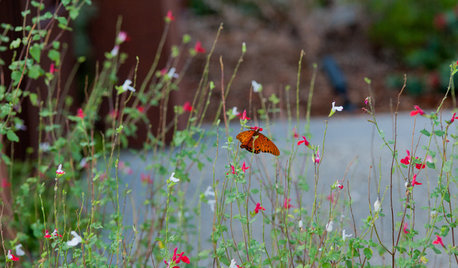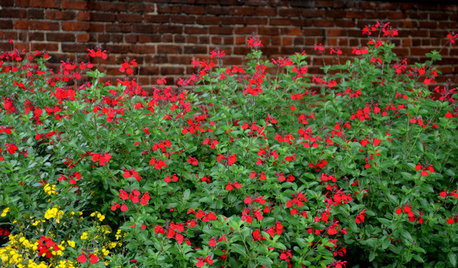Starting a Mexican butterfly garden
gcertain
16 years ago
Related Stories

EARTH DAYCreate a Container Wildlife Habitat for Hummingbirds and Butterflies
Don’t let limited space prevent you from welcoming wildlife into your garden
Full Story
GARDENING GUIDES6 Steps to Creating Your Butterfly Garden
Encourage these fanciful winged beauties to visit your garden while helping restore their fragmented habitat
Full Story
GARDENING GUIDESGreat Design Plant: Autumn Sage Brings Color and Butterflies
Whether you live in the arid desert or the humid South, you'll likely find this deer-resistant beauty as irresistible as winged creatures do
Full Story
FALL GARDENINGWhat Monarch Butterflies Taught Me About Garden Design
Thinking like a butterfly leads to fresh perspectives in the garden and in life
Full Story
CALIFORNIA NATIVE PLANTSGreat Design Plant: Asclepias Is Attractive to Monarch Butterflies
Increase monarch butterfly populations in California by planting stunning native milkweeds
Full Story
GARDENING FOR BUTTERFLIESA Quick-Start Guide to Bird-Watching for Fun and Learning
Set out some seed and grab your field guide. Bird-watching is an easy, entertaining and educational activity for the whole family
Full Story
GARDENING GUIDESHow to Stop Worrying and Start Loving Clay Soil
Clay has many more benefits than you might imagine
Full Story
GARDENING FOR BUTTERFLIESBe a Butterfly Savior — Garden for the Monarchs
Keep hope, beauty and kindness alive in the landscape by providing a refuge for these threatened enchanters
Full Story
GARDENING FOR BUTTERFLIESButterfly Gardening: Delight the Eyes With Living Sculptures
Surprise and thrill with a garden that attracts magical winged creatures, bringing color, movement and life
Full Story
GARDENING GUIDES6 Plants That Beat Butterfly Bush for the Wildlife Draw
It's invasive, a nonnative and a poor insect magnet. Check out these better alternatives to butterfly bush in the garden
Full StorySponsored
More Discussions




suzannie41
bigthicketgardens
Related Discussions
A few butterflies from Mexico
Q
Apparently 2009 butterfly season has started for my garden
Q
Starting a Butterfly Garden
Q
How to start a butterfly garden?
Q
gcertainOriginal Author
gcertainOriginal Author
gcertainOriginal Author
zebz
flowers_galore
susanlynne48
gcertainOriginal Author
tdogmom
mssunflower
gcertainOriginal Author
mssunflower
gcertainOriginal Author
gcertainOriginal Author
mcronin
gcertainOriginal Author
MissSherry
mcronin
mcronin
gcertainOriginal Author
mcronin
gcertainOriginal Author
gcertainOriginal Author
gcertainOriginal Author
gcertainOriginal Author
LaurelLily